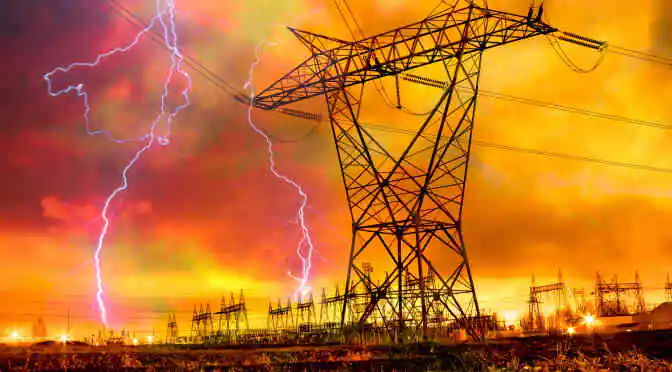The fourth industrial revolution is an exciting time, especially for the global energy sector. In 2017, we witnessed that the global energy landscape has outgrown the traditional centers of demand and has turned its focus to emerging economies. Additionally, here is a brief analysis of how this industry performed in the past year.
Economize and innovate– Guiding principles of the energy sector this year
2017 inherited the challenge of meeting the new demands of technology conscious consumers within the framework of a limited revenue downturn. The only way in which this could be achieved was through innovation and economizing the entire business model of energy production as well as its distribution. In the process, what added life and vigor to the industry were the strategies and business models that have popularly evolved this year.
Top 5 Trends in the Energy Sector
#1 Digitization of assets
Microgrids, smart meters, energy management systems, and IP-enabled sensors are just a few of the many examples of how innovative digital assets have become the “hot trend” in the global energy industry. Leveraging the power of advanced analytics, stakeholders are employing predictive capabilities to build smart energy infrastructure to address problems like anomalous readings and asset malfunctions.
With the evolution of Industry 4.0, businesses large and small have adopted this technological approach and have benefitted from it. 2017 has brought an equal measure of opportunities to the energy businesses through higher connectivity, greater automation, and, above all, intelligent use of data analytics.
Related report sample: Global Offshore Drilling Market 2018-2022
#2 E-fuels made a fabulous entry
In an energy starved world, e-fuels have emerged as a salvation of sorts. A blanket term for fuels derived from electricity, e-fuels are seen as the potential disruptors in the existing fuels space. As one of the more environment friendly energy alternatives, e-fuels have seen investments from some of the top names in the industry. The fact that e-fuels are compatible with the present industrial and supply chain infrastructure has pushed policy makers to see it as a viable solution for the global energy woes, especially in light of the advances in material sciences and AI.
#3 A fresh breeze of change with wind technology
One of the fastest growing sources of energy, wind technology has everything that consumers in the 21st century are looking for– it is renewable, has zero emissions, and it’s affordable. This year, there have been major technological breakthroughs that have improved the former’s overall performance and reliability, while eliminating technical challenges that used to hinder the large-scale use of wind technology for power generation.
Aspects like increased tower height, higher power capacity, and advances in aerodynamics have also played a critical role in turning wind technology into one of the most sought-after power generation options in a number of countries throughout the world. By the end of 2017, it is hoped that the next generation wind technology will be powered by kite turbines.
View related related report: Global Power Rental Accessories Market 2018-2022
#4 Next-generation solar conversion goals
Just like wind technology, solar technology has also emerged as one of the most viable and sustainable options for reliable energy production. A highly capital-intensive market, the solar power industry is witnessing immense investment due to the big reduction in the cost of solar modules. Our market analysts predict solar photovoltaic technology to generate close to 20% of the world’s electricity by 2050. Current technologies like perovskite have made the production of solar cells more efficient, and cost-effective at the same time.
#5 Energy suppliers are transforming into lifestyle providers
Currently, there is a rising trend wherein consumers are opting for solar roofing or wind turbines and prefer selling excess energy back to the grid. As a result, energy suppliers are also moonlighting as lifestyle providers. Also, the fact that by 2020, 20% of the traditional energy companies will no longer be generating electricity has not only placed the consumers on the center stage, but has also forced stakeholders in the energy industry to re-calibrate their services.
Thus, it is easy to conclude that innovation and economization of existing energy options are the trends that have kept this industry in full vibrancy. Technological improvements and environmental concerns have surely changed the energy paradigm over the past few years, with 2017 witnessing rapid improvements in the availability and competitive landscape associated with the renewable, nuclear, and hydro energy sectors.
View related market report: Wind Turbine Market in India 2018-2022
A Bright Future for the Energy Sector in 2019
Just like in 2018, the upcoming year will witness a high degree of technological innovation in the global energy sector. Evolution of blockchain, IoT, and distributed energy systems are three major trends predicted by our industry analysts at Technavio. Tech corporations like STMicroelectronics, Schneider Electric, GE, and Kiban Labs Inc. have already invested in R&D activities to synergize IoT into their products.
Policy makers, pressure groups, and international organizations have committed to working on an inclusive, environment-friendly energy producing space. 2019 promises immense opportunities for stakeholders and investors and is sure to give consumers an upper hand in the core decision-making process.
View more Technavio’s market reports in global energy sector



